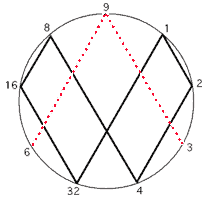Here's a refresher video:
https://www.youtube.com/watch?v=DovunOxlY1k#ws
For EVERY action there is an equal but opposite reaction. How long do we have to wait for the reaction? Can it be happening at the same precise time as the action? Does the reaction have to happen in a form observable to Humans by any means?
Notice he shows the camera side of the machine to demonstrate how the wave looks, but puts his terminating devices on the other wave on his side of the machine. We are looking at the camera side of a wave on our ossilly scopes, completely ignoring the back side of the wave. Sure its an equal but opposite wave, we can predict it, so it is easy to ignore it. But I think in the video demonstration he proves the back side of the wave can be manipulated affecting the front of the wave with out notice, if that is all you are looking at. Providing that we can apply this simple mechanical demonstration to all waves in nature as he says.
When I first seen him run a wave through the machine, I thought of this right away. Many have wondered what this symbol looks like in 3D. Some have tried to draw it as a sphere, I've thought about trying that myself. The problem is the symbol doesn't represent a single static object. It's showing a snapshot in time of perpetual movement.

Well, I think we just seen it in 3D in the old ATT video. I have some scribblings started to try and show that the symbol is really a sine wave with mirrored symmetry across a central axis (not a central plane). I think this symbol is exactly the same as our modern day scope shot with the trigger set correctly. All a scope is missing is the back side of the wave and the numbers in the right places on the wave. :) I'll be labelling my battery terminals 3 and 6 from now on. :P ;)
Nate